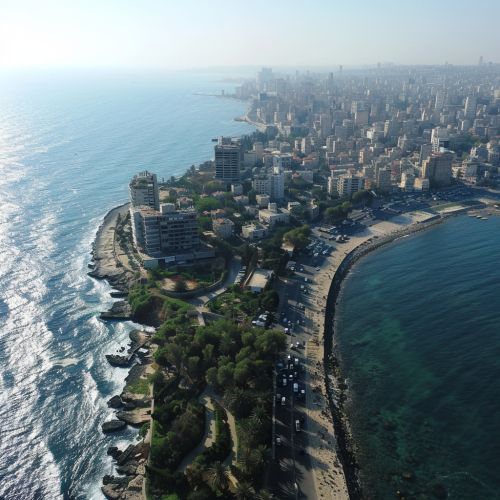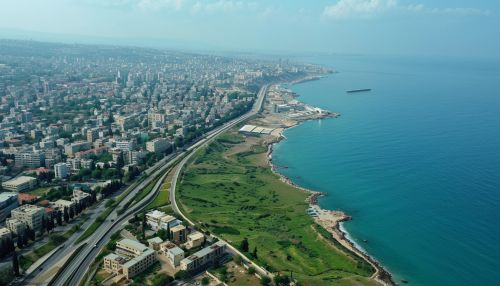Sidon
History
Sidon, also known as Saida, is one of the oldest continuously inhabited cities in the world, tracing its roots back to the Neolithic period. The city is located in the Lebanese coastal plain, south of the country's capital, Beirut. Sidon was an important Phoenician city-state, renowned for its glass manufacturing and purple dye industries.


The city's history is intertwined with the various civilizations that have ruled over the region, including the Phoenicians, Persians, Greeks, Romans, Byzantines, Arabs, Crusaders, Mamluks, and Ottomans. Each of these civilizations left its mark on the city, contributing to its rich cultural and architectural heritage.
Phoenician Period
During the Phoenician period, Sidon was a major center of sea trading and shipbuilding. The city was known for its production of a particular type of purple dye, known as Tyrian purple, which was made from the murex sea snail and was highly prized in antiquity. The city's strategic location on the Mediterranean coast facilitated its growth as a prosperous trading hub.
Hellenistic and Roman Periods
The city fell under the control of the Seleucid and later the Roman empires during the Hellenistic and Roman periods, respectively. The Romans built several monuments in the city, including a hippodrome, a theater, and a monumental arch.
Islamic and Crusader Periods
With the advent of Islam in the 7th century, Sidon came under the rule of the Umayyads and later the Abbasids. The city was then captured by the Crusaders in the 12th century and became one of the principalities of the Kingdom of Jerusalem. It was during this period that the Sea Castle, one of Sidon's most famous landmarks, was built.
Ottoman Period and Modern Era
Sidon came under Ottoman rule in the 16th century and remained so until the end of World War I. During this period, the city retained its importance as a center of trade and craftsmanship. In the modern era, Sidon has grown into a bustling city, with a diverse economy and a rich cultural scene.
Geography and Climate
Sidon is located on the Mediterranean coast of Lebanon, about 40 kilometers south of Beirut. The city has a typical Mediterranean climate, with hot, dry summers and mild, rainy winters.
Economy
Sidon's economy is diverse, with sectors including trade, agriculture, fishing, and tourism. The city is known for its traditional crafts, such as soap making and glass blowing. The old souks of Sidon are a popular tourist attraction, offering a variety of local products and handicrafts.
Culture
Sidon has a rich cultural heritage, with influences from the many civilizations that have ruled the city. The city is home to numerous historical sites, including the Sea Castle, the Great Mosque, and the ruins of the Roman Hippodrome.
